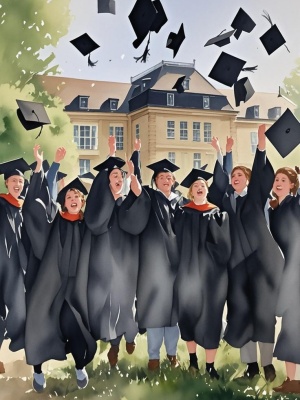The Timeless Beauty of Antique Chinese Watercolor
Introduction: A Glimpse into China's Artistic Legacy
Antique Chinese watercolor represents one of the most refined and sophisticated art forms in human history. Dating back over 2,000 years, these delicate paintings capture the essence of Chinese philosophy, nature, and daily life through masterful brushwork and subtle color palettes. Unlike Western painting traditions, antique Chinese watercolor emphasizes spiritual resonance over physical likeness, creating works that continue to inspire artists and collectors worldwide.
For those interested in exploring more about artistic techniques, our AI Painting Guide offers modern perspectives on traditional methods.
The Historical Evolution of Chinese Watercolor
From Ancient Beginnings to Imperial Refinement
The origins of antique Chinese watercolor can be traced to the Han Dynasty (206 BCE-220 CE), where early forms appeared on silk scrolls. The Tang (618-907) and Song (960-1279) dynasties witnessed remarkable developments in technique and subject matter, with artists perfecting the use of ink washes and mineral pigments.
Key Historical Periods:
- Han Dynasty: Emergence of basic techniques
- Tang Dynasty: Development of landscape painting
- Song Dynasty: Refinement of ink wash methods
- Ming Dynasty: Flourishing of literati painting
Distinctive Characteristics of Antique Chinese Watercolor
Several unique features distinguish antique Chinese watercolor from other painting traditions:
- Brushwork Mastery: The "Four Treasures" (brush, ink, paper, and inkstone) were essential tools
- Philosophical Depth: Paintings often embodied Daoist or Buddhist principles
- Negative Space: Strategic use of blank areas created balance and harmony
- Poetic Integration: Many works included calligraphy and poetry
Modern artists can learn from these techniques through resources like our Portrait to Art Detail guide.
Preservation Challenges and Modern Solutions
The Fragility of Ancient Watercolors
Antique Chinese watercolors face numerous preservation challenges due to their delicate materials and aging processes. Traditional silk and paper substrates are particularly vulnerable to environmental factors.
Problem-Solution Matrix:
| Problem | Traditional Solution | Modern Solution |
|---|---|---|
| Color Fading | Limited light exposure | Advanced UV-filtering glass |
| Material Degradation | Natural preservation techniques | Climate-controlled storage |
| Damage Repair | Skilled manual restoration | Digital reconstruction tools |
For those interested in restoration techniques, our AI Photo Restoration article explores modern approaches.
Collecting and Appreciating Antique Chinese Watercolors
Building a collection of antique Chinese watercolors requires specialized knowledge and careful consideration:
- Authentication: Work with reputable dealers and experts
- Condition Assessment: Examine for repairs, fading, and structural integrity
- Provenance Research: Document the artwork's history and ownership
- Display Considerations: Proper framing and environmental controls

Conclusion: The Enduring Legacy of Chinese Watercolor
Antique Chinese watercolor continues to captivate audiences with its timeless beauty and profound cultural significance. As we preserve these masterpieces for future generations, they remain a testament to China's rich artistic heritage. Whether through traditional study or modern digital tools like those featured in our Gallery, these works offer endless inspiration for artists and art lovers alike.
For further reading on Asian art traditions, consider visiting the Metropolitan Museum of Art's Asian collection or the British Museum's Chinese painting archives.
